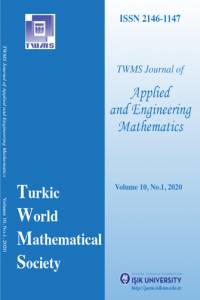INTERACTION BETWEEN SELECTION AND SEGREGATION RATIOS WITH REDEFINED CONCEPT OF FITNESS DIFFERENTIALS
INTERACTION BETWEEN SELECTION AND SEGREGATION RATIOS WITH REDEFINED CONCEPT OF FITNESS DIFFERENTIALS
Taking into account the redefined concept of fitness differentials among the genotypes, natures of equilibria of models of differential selection in the two sexes under random mating with Mendelian segregation as well as with segregation distortion have been analyzed. Two cases of real interest, where different genes are favored in the two sexes and where overdominance is involved, have been investigated. It has been illustrated through graphical representation that the degree of dominance over the sexes mainly comparing the heterozygous fitnesses in males and females is a function of equilibrium region. The considered framework of the one locus model unveils most important result that, generally, above the value of Mendelian segregation, prone to arising of single stable polymorphic equilibrium increases.
___
- [1] Ganetzky, B., (1999), Yuichiro Hiraizumi and forty years of segregation distortion, Genetics, 152, 1-4.
- [2] Strickberger, M.W., (2004), Genetics, Third edition, Prentice-Hall of India Private Limited, New Delhi.
- [3] Ubeda, F. and Haig, D.,(2004), Sex-specific meiotic drive and selection at an imprinted locus, Genetics, ´ 167, 2083-2095.
- [4] Bodmer, W. F., (1965), Differential fertility in population genetics models, Genetics, 51 , 411-424.
- [5] Kidwell, J. F., Clegg, M. T., Stewart, F. M. and Prout, T. , (1977), Regions of stable equilibria for models of differential selection in the two sexes under random mating, Genetics, 85, 171-183.
- [6] Owen, A. R. G., (1953), A genetical system admitting of two distinct stable equilibria under natural selection, Heredity, 7, 97-102.
- [7] Feldman, M.W. and Otto, S. P., (1991), A comparative approach to the population genetics theory of segregation distortion, American Naturalist, 137, 443-456.
- [8] Hartl, D. L., (1970), Analysis of a general population genetic model of meiotic drive, Evolution, 24, 538-545.
- [9] Wright, S., (1969), Evolution and the Genetics of Populations, Vol.2, University of Chicago Press, Chicago/Boston.
- [10] Spencer, H. G., (1997), Mutation-selection balance under genomic imprinting at an autosomal locus, Genetics, 147, 281-287.
- [11] Van Cleve, J. and Feldman, M.W., (2007), Sex-specific viability, sex linkage and dominance in genomic imprinting, Genetics, 176, 1101–1118.
- [12] Ewens, W. J., (2004), Mathematical Population Genetics I. Theoretical Introduction, Springer, New York.
- [13] Kapur, J. N. , (2000), Mathematical Models in Biology & Medicine, Affiliated East-West Press Private Limited, New Delhi.
- [14] Lessard , S. and Karlin, S., (1982), A criterion for stability-instability at fixation states involving an eigenvalue one with applications in population genetics, Theoretical Population Biology, 22, 108-126.
- [15] Prout, T., (1968), Sufficient conditions for multiple-niche polymorphism, American Naturalist, 102, 493-496.
- [16] Sanyal, D. C. and Sarkar, B., (2009), A theoretical framework relating to exponentially frequencydependent selection model in Pollak’s sense, International Journal of Biomathematics, 2 , 179-196.
- ISSN: 2146-1147
- Başlangıç: 2010
- Yayıncı: Turkic World Mathematical Society
